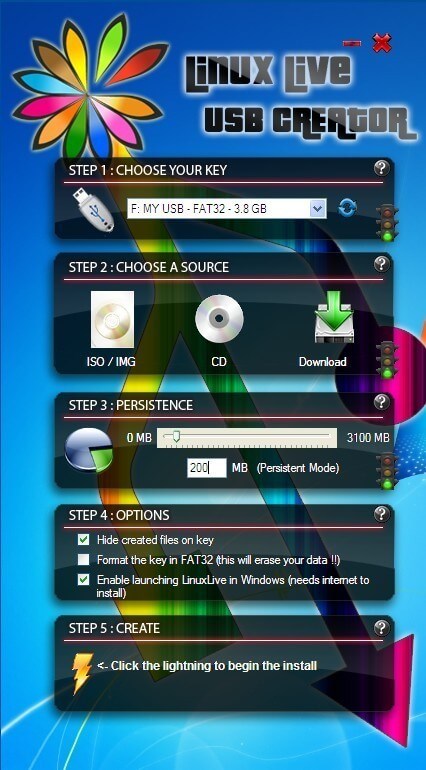
You’ll notice a couple of odd things in this command.įirst, the block size value: bs=1048576. When the Ubuntu ISO finishes downloading, you are ready to copy it to the USB drive using dd: sudo dd if=~/Downloads/ubuntu-14.04.3-server-amd64.iso of=/dev/rdisk2 bs=1048576

I am not, nor is anyone else, responsible for any potential data loss. Once you figure out which device the USB drive was mapped to, unmount it ( disk2 is the device in this example, your device will probably be different): diskutil unmountDisk /dev/disk2Ĭopy the Contents of the Ubuntu ISO to the USB Driveĭisclaimer: The following steps will erase everything on your USB drive. Open Terminal and run the following command to figure out which device the USB drive was mapped to: diskutil list Next, plug your USB drive into your Mac it will automatically be mounted by OS X. Start by downloading the Ubuntu ISO you want to boot from. You can simply download the Ubuntu ISO and use dd to copy it to a USB drive. If you hit a problem or have feedback, leave a comment below.Ubuntu has a great set of instructions on creating a bootable USB drive in Mac OS X, but they have an additional step I found not to be needed: there’s no need to convert the Ubuntu ISO to an IMG file. You have learned how to create a bootable Ubuntu USB stick from the Linux terminal. That’s all! You have a bootable Ubuntu on your USB stick. Once completed, you will see something like below: 458+1 records inġ921843200 bytes (1.9 GB, 1.8 GiB) copied, 147.006 s, 13 MB/s The process may take several minutes, depending on the size of the ISO file and the USB stick speed. The command will show a progress bar while flashing the image. sudo dd bs=4M if=/path/to/ubuntu-18.04.2-desktop-amd64.iso of=/dev/sdx status=progress oflag=sync , then it should be stored in the Downloads folder located in your user account. If you downloaded the file using a web browser Also, replace /path/to/ubuntu-18.04.2-desktop-amd64.iso with the path to the ISO file. Make sure you replace /dev/sdx with your drive and do not append the partition number.

The final step is to flash the Ubuntu ISO image to the USB drive. To do so, use the umountĬommand followed by either the directory where it has been mounted (mount point) or the device name: sudo umount /dev/sdx1 Before flashing the image make sure the USB device is not mounted.

Most Linux distributions will automatically mount USB flash drive when inserted. └─sdx1 8:17 1 7.5G 0 part /run/media/linuxize/KingstonĪs you can see from the output above, the a USB device is /dev/sdx, but this may vary on your system. The output will look like this: NAME MAJ:MIN RM SIZE RO TYPE MOUNTPOINT Start by inserting the USB flash drive into the USB port.įind out the name of your USB drive with the lsblk command: lsblk How to make Windows bootable usb drive with WoeUSB on LinuxĬreating Bootable Ubuntu USB Stick on Linux is a quick and easy process, just follow the steps detailed below.


 0 kommentar(er)
0 kommentar(er)
